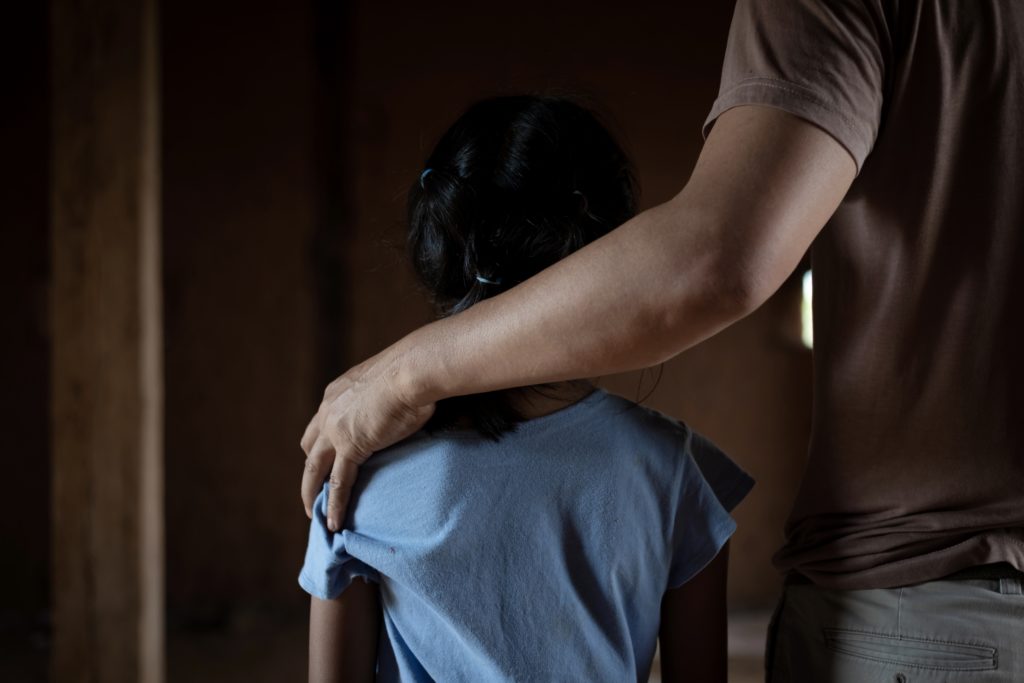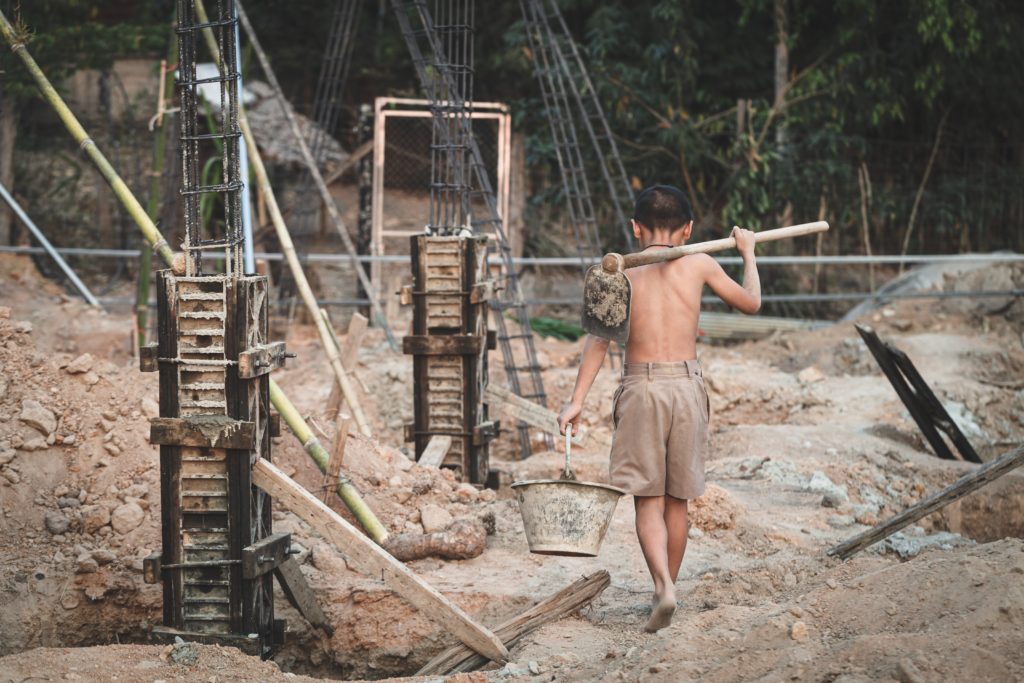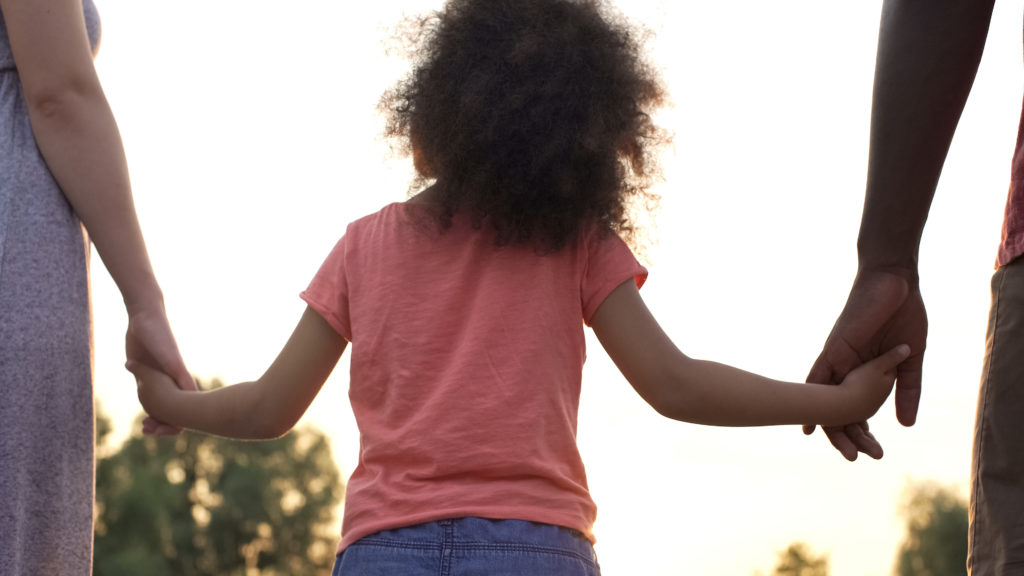Combating child trafficking
Each year, more than 10,000 people are identified as victims of trafficking around the world. Of these victims, 13% are girls and 9% boys (UNODC, 2009). These figures only represent a small proportion of the victims identified. Closely linked to child labour, child trafficking is present in all regions of the world. In particular, it responds to demands for cheap or free labour and leads to various forms of child exploitation, such as forced marriage, prostitution, and begging, thus depriving children of their fundamental rights.

Definition of child trafficking
Child trafficking is the process of exploiting a child through the recruitment, transportation, transfer, harbouring or receiving of a child (International Labour Office, 2011). Under international law, child trafficking is a crime and a violation of children’s rights. In particular, the 1989 International Convention on the Rights of the Child stipulates that “the illicit transfer and non-return of children” are prohibited.
Child trafficking is also characterised by the practice of illicit acts, namely, the use of force or coercion:(by abduction, deception, fraud or abuse of authority) or the offer of payments or benefits: to the victim or to a person having authority over them. Child victims of trafficking suffer abuse and are also, for the most part, deprived of their fundamental rights such as the right to education, the right to health or the right to protection, which are necessary for fulfilled growth (UN Info, 2015).
According to UNICEF, “some 8.4 million young people are involved in the worst forms of child labour, including prostitution. Many are enslaved: forced to work to pay off a debt, they live in a situation similar to that of slavery” (UNICEF, 2005). According to the ILO, a child trafficker is defined as “any person who contributes to any element of the trafficking process with the intention of exploiting the child. This includes those who are not active in any phase of the process, such as recruiters, intermediaries, document providers, transporters, corrupt officials, service providers, and unethical employers” (International Labour Office, 2011).
Forms of exploitation
Trafficked children are used in various ways depending on their age and sex (Terre des Hommes, 2004), as described below.
Sexual exploitation
It is mainly adolescent girls who are used for prostitution or the production of child pornography. These practices are particularly widespread in sex tourism destinations. Teenage girls are generally sold in other countries and travel under false identity papers. According to UNODC, sexual exploitation accounts for 79% of human trafficking (UNODC, 2009).
Although sex tourism has largely declined since the Covid crisis, a new form of sexual exploitation of children is booming: child pornography. In the Philippines, around one child in five, or almost 2 million children, are at risk of being sexually exploited.
Extreme poverty and broadband access in regions of extreme poverty are factors in this phenomenon. In order to improve their living conditions, parents exploit their children as merchandise by sending child pornography to people abroad in return for payment (Bicker, 2022).
Forced marriage
Forced marriage of teenage girls, although on the decline, still exists in various forms, such as arranged marriages and kidnappings. This practice is particularly widespread in China due to the shortage of women resulting from the “one-child family” policy. It is often carried out by “marriage brokers” and is spreading internationally. According to UNICEF, more than 80 million girls worldwide are married before the age of 18 (UN Info, 2015).
Adoption
As with most forms of child exploitation, adoption has been turned into a profitable business by traffickers. This concerns babies and young children, particularly from Latin America to North America and from Eastern Europe to Western Europe.
While some parents are paid to sell their baby or young child, there are also cases of corruption in hospitals, where mothers are told that their baby is stillborn. These recruitments are supported by falsified documents and bribery. Barbara Hintermann, Executive Director of Terre des Hommes, reported in June 2022 that 350,000 Ukrainian children had been deported and put up for adoption by Russian families since the start of the conflict in Ukraine in February 2022 (Hintermann, 2022).
Slavery

Slavery is one of the worst forms of child labour. It means that children cannot leave their employer, are under the minimum working age or work for low wages (Terre des Hommes, 2004). Also, parents sometimes accept payment in advance for their child’s work, for a fixed or indefinite period. In addition, child domestic labour is a form of exploitation that has increased over the last two decades. Children are sent to live and work as domestic servants with families abroad. Traffickers take advantage of parents’ ignorance and exploit the vulnerability of working children.
In addition, although some children beg for themselves or their families, there are many cases of children being recruited and exploited to “take advantage of the public’s inclination to give charity, particularly when it is seen as a religious duty” (Terre des Hommes, 2004). Apart from this, some children are exploited to carry out illicit activities, such as burglaries, on behalf of adults who control them.
In addition, some employers take advantage of the illegal status of trafficked children to make them do dangerous work. For example, for many years, trafficked boys have been employed as camel jockeys in the Gulf States.
Finally, it is estimated that organ trafficking accounts for between 5 and 10% of kidney transplants carried out each year worldwide (Busuttil, 2012). Although there are many accounts and testimonies of this trafficking of children’s organs, there are no official sources recording such acts.
Socio-economic factors leading to child trafficking
The children most vulnerable to trafficking often come from poor backgrounds or regions at war, in political conflict and/or experiencing economic uncertainty. Indeed, these environments are much more sensitive to the economic gains linked to child trafficking. Children with little education are also vulnerable targets. Child labour is particularly associated with school drop-out.
According to the International Labour Organisation, “More than a quarter of children aged 5 to 11 and more than a third of children aged 12 to 14 in child labour are out of school” (International Labour Organisation, 2022). Finally, children who are victims of discrimination, persecution or former victims of trafficking are more likely to (again) become victims of trafficking, as they are unaware of their fundamental rights.
On the other hand, recourse to child trafficking can be explained by various socio-economic factors such as the demand for cheap or free labour in certain sectors to reduce production costs and thus selling prices.
Inequalities between countries in terms of education and employment, as well as a lack of equal opportunities, discrimination and abuse, also encourage child trafficking, since many people from poor countries find it difficult to find a job that will allow them to live properly, particularly if they emigrate to richer countries.
Ways of combating child trafficking
In order to combat child trafficking, 3 major areas need to be addressed (Northern Ireland Department of Justice, 2021):
- Prosecute the perpetrators of these practices through detection, investigation and conviction in order to dismantle child trafficking organisations (Northern Ireland Department of Justice, 2021);
- Protect children from trafficking and slavery by improving the identification of and support for child victims and by supporting them to reduce the harm caused by trafficking and slavery (Northern Ireland Department of Justice, 2021);
- Prevent child trafficking in the long term by tackling socio-economic inequalities around the world, reducing the demand for trafficked and enslaved children, and making trafficking and slavery practices unprofitable. It is also important to improve public and professional understanding of the issue through awareness-raising (NSPCC, 2021).
Here are a few factors that can help everyone identify trafficked children (NSPCC, 2021):
- If a child spends a large part of his or her time doing household chores and has no time to leave the house or even to play;
- If a child is orphaned or separated from his or her family, while living in poor-quality housing;
- If a child is not enrolled in school or a GP’s surgery;
- If a child is present in inappropriate places such as brothels or factories;
- If a child is reluctant to share personal information, where they live and tells a story that seems prepared in advance.

If you are concerned about a child, contact Humanium’s legal helpline, the police and/or the relevant local child protection authorities.
Written by Marie Cuvelier
Translated by Emily Kitchen
Proofread by Sharon Rees
Last updated on 21 March 2023
Bibliography:
Bicker, L. (2022, Décembre 10). Pourquoi les cas de pédophilie sont-ils en hausse aux Philippines ? Consulté le 15 Mars 2023, sur BBC News Afrique: https://www.bbc.com/afrique/articles/c84p1lvzqy0o.
Bureau International du Travail. (2011, Avril 01). Traire des enfants – Points essentiels. Consulté le 15 Mars 2023, sur ilo.org: https://www.ilo.org/ipecinfo/product/viewProduct.do?productId=16596.
Busuttil, F. (2012, Décembre 16). Trafic d’enfants. Consulté le 01 Mars 2023, sur Humanium: https://www.humanium.org/fr/trafic-enfants/.
Département de la Justice de l’Irelande du Nord. (2021). Modern Slavery and human trafficking strategy 2021-22. Consulté le 25 Avril 2023, sur www.justice-ni-gov.uk: https://www.justice-ni.gov.uk/sites/default/files/publications/justice/modern-slavery-strategy-27-05-v2_0.pdf.
Hintermann, B. (2022, Juin 22). letemps.ch. Consulté le 25 Avril 2023, sur letemps.ch: https://www.letemps.ch/opinions/forces-captures-deportes-scandale-enfants-dukraine.
NSPCC. (2021, Juin 14). Protecting children from trafficking and modern slavery. Consulté le 25 Avril 2023, sur learning.nspcc.org.uk: https://learning.nspcc.org.uk/child-abuse-and-neglect/child-trafficking-and-modern-slavery#article-top.
OIT. (2009, Juillet 01). Manuel de formation sur la lutte contre la traite des enfants à des fins d’exploitation de leur travail, sexuelle ou autres formes – Action politique de sensibilisation contre la traite des enfants. Consulté le 15 Mars 2023, sur ilo.org: https://www.ilo.org/ipec/Informationresources/WCMS_IPEC_PUB_10772/lang–en/index.htm.
ONU Info. (2015, Décembre 14). Des centaines de millions d’enfants exclus et “invisibles”, dénonce l’UNICEF dans son rapport annuel. Consulté le 15 Mars 2023, sur News.un.org: https://news.un.org/fr/story/2005/12/84342.
Organisation Internationale du Travail. (2022, Avril 15). Travail des enfants – estimations mondiales 2020, tendances et chemin à suivre, résumé. Consulté le 25 Avril 2023, sur ilo.org: https://www.ilo.org/wcmsp5/groups/public/—ed_norm/—ipec/documents/publication/wcms_800300.pdf.
Terre des Hommes. (2004, Mai). Les enfants, une marchandise ? Agir contre la traite des enfants. Consulté le 15 Mars 2023, sur Terre des Hommes: https://www.tdh.ch/sites/default/files/tdh_enfants_marchandise-fr.pdf.
UNICEF. (2005). La situation des enfants dans le monde 2006 – exclus et invisibles. Consulté le 15 Mars 2023, sur UN-iLibrary: https://www.un-ilibrary.org/content/books/9789210597869/read.
UNODC. (2009, Février). Global Report on Trafficking in Persons – Human Trafficking a crime that shames us all. Consulté le 15 Mars 2023, sur UNODC: https://www.unodc.org/documents/Global_Report_on_TIP.pdf.

